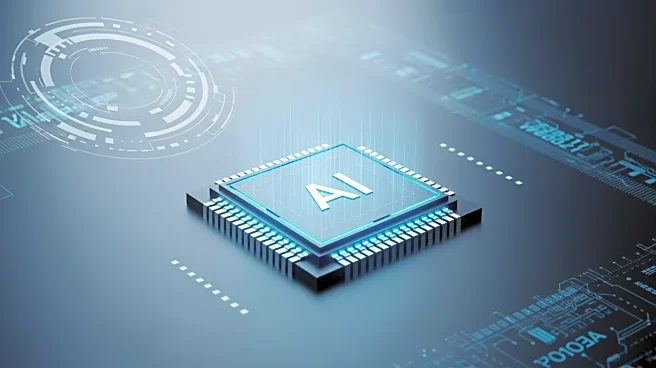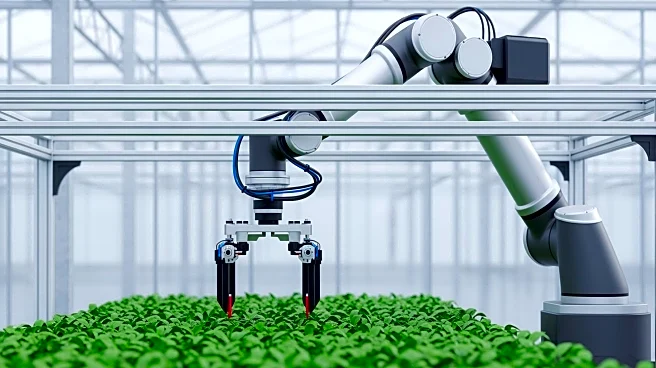What's Happening?
Researchers have developed a novel approach combining angle-resolved scatterometry (ARS) with deep learning to monitor nanowire doping in molecular beam epitaxy (MBE) processes. This method, detailed in a study conducted at Wuhan University, involves
using ARS to capture back focal plane (BFP) images that reflect the doping concentration of silicon-doped gallium nitride (GaN) nanowires. The BFP images are then analyzed using a convolutional neural network to accurately retrieve doping parameters. The study highlights the sensitivity of ARS to nanostructures, offering a more precise alternative to traditional measurement techniques like ellipsometry. The research demonstrates the potential of machine learning to enhance real-time monitoring and control in nanowire synthesis, which is crucial for optimizing electronic properties in semiconductor applications.
Why It's Important?
The integration of deep learning with ARS in monitoring nanowire doping represents a significant advancement in semiconductor manufacturing. This method allows for precise control over doping concentrations, which is critical for the performance of electronic devices. By improving the accuracy of doping measurements, manufacturers can enhance the quality and efficiency of semiconductor products, potentially leading to more reliable and powerful electronic devices. This development could benefit industries reliant on advanced semiconductor technologies, such as computing, telecommunications, and consumer electronics, by reducing production costs and increasing device performance.
What's Next?
The study suggests further exploration into optimizing measurement wavelengths for different nanowire materials using equivalent simulation models. Researchers aim to refine the deep learning-assisted ARS technique to achieve even higher precision in doping concentration measurements. Additionally, the method's applicability to other material systems, such as silicon-doped aluminum nitride thin films, is being evaluated to demonstrate its universality. Future work may focus on enhancing the sensitivity of ARS to various doping concentrations and exploring its potential in other semiconductor manufacturing processes.
Beyond the Headlines
The use of deep learning in nanowire doping monitoring raises questions about the broader implications of artificial intelligence in manufacturing. As AI technologies become more integrated into production processes, ethical considerations regarding data privacy and algorithmic transparency may arise. Furthermore, the shift towards AI-driven manufacturing could lead to changes in workforce dynamics, necessitating new skill sets and potentially impacting employment in traditional manufacturing roles.













